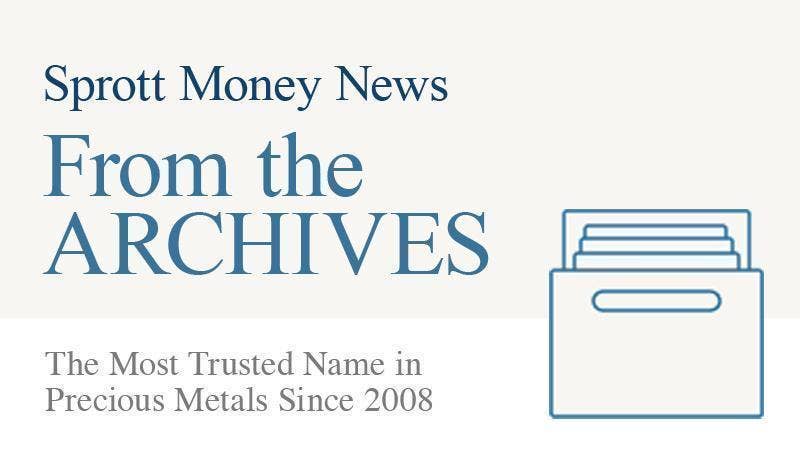2 Nov, 2018
Gold remains stuck in a range, but has begun testing that range recently. On the downside, it broke 1219 support on Wednesday, the prior double bottom, and then stalled at 1214. On the upside, it hit 1246 on Monday, and following Wednesday’s visit to 1214 it jumped back up towards 1240 yesterday. With 1251 being the 38.2% Fibonacci retracement of the entire decline from 1360 to 1184 on a closing basis, that puts the range for Gold at 1214-1251. Despite recent bullishness, we need to close above 1251 to feel increasingly confident that the bottom is in place. But even then, there are no guarantees.
So why has Gold rallied recently?
First, it most certainly is not due to a rising or falling DXY, the dollar index. The DXY typically trades inversely to Gold, but that correlation has broken down in recent months, thanks to the CNY. More often than not recently, they have both moved in the same direction on a daily basis. This is clearly showed by the correlation coefficient between the two below. It has turned positive. Now, it may go back to being a driver of Gold prices in the future, especially when the dollar peaks and dumps, but until then, DXY has little to do with Gold’s performance.
Gold has little to do with the performance of the U.S. stock market also. The argument goes that when stocks fall, funds flow into safe havens like Gold, and it rises in price. This is not definitive at all. I demonstrated this in my previous article https://www.sprottmoney.com/Blog/inflection-point-for-gold.html?platform=hootsuite. If it were true, then when stocks rebound, Gold should fall too. But even yesterday, when Gold soared, stocks were up almost 1% too—3.4% in just the past couple of days, in fact. Now, I know one day does not a trend make, so let’s consider the peak-to-through in stocks recently.
The S&P has fallen 11.5%. What did Gold do during the same period from October 3 to October 29? It rose just 1.9%, and the bulk of that increase was on one day, October 11 (two days, if you include yesterday also). Stocks dropped sixteen of the nineteen days to October 29. Why didn’t Gold go up 16 times, and to a greater degree? And for an even greater sample, look at Gold’s performance from December 2016 to April 2018 and compare it to that of stocks: they both rose together. What changed in April 2018? We’ll focus on that and those two days of big gains in Gold next to illustrate what is really driving the precious metal’s performance.
Many people who were already dubious of the obvious relationship between Gold and developments in the CNY since April (and, in turn, the U.S.-China trade war) were quick to dismiss the obvious relationship recently when the “correlation” seemed to break down. However, as I’ve pointed out in several previous articles, the relationship between Gold in dollar terms and CNY is not solely due to USD/CNY, it is also based on Gold in CNY terms. Simply put:
XAU/USD = XAU/CNY divided by USD/CNY
What happened recently was that the USD/CNY stalled ahead of critical resistance at 7, while XAU/CNY broke its falling resistance and 8350 and jumped to 8630. ‘Why’ is up for debate, but it could be that exporters to China, and Chinese people themselves, were no longer comfortable converting their yuan to dollars, but preferred to convert them to Gold instead. Hence the rise in Gold in yuan terms. The PBOC and SAFE control the USD/CNY exchange rate, so that would explain why it didn’t fall as a result of less demand for dollars in exchange for yuan.
Whatever the reason, XAU/CNY jumped while USD/CNY stalled, and so XAU/USD also rose. The perception was that the relationship between Gold in dollar terms and USD/CNY was broken, but it appears to have only been temporary, because XAU/CNY has now fallen back somewhat and stabilized again, while the risk of USD/CNY breaking 7 remains, should tensions escalate further post the G20 meeting in November. If that 7 level is broken, USD/CNY is likely to soar overnight, given that level’s critical importance. Gold could fall to lower lows somewhere between 1160-1124 if that occurs.
If the G20 negotiations go the way of previous talks and produce absolutely nothing, and Trump proceeds with 25% on all Chinese exports to the U.S.—$500bln worth—then it is feasible that China could devalue the yuan another 10%. Based on current valuations at the time of writing, this would lead to the following in scenario 1, or S1.
Unless China is willing to devalue the yuan overnight in both dollar and yuan terms, S2, Gold could fall to the December 2016 low of ~1124 again. The point being that CNY still drives the Gold bus, but it is now more complicated due to the new volatility in XAU/CNY.
To further emphasize this point, let’s review the two big days of Gold gains in the past month. As I covered in my previous article, Gold’s jump from 1193 to 1230 on October 11 was entirely driven by the two olive branches extended to China by the U.S, which were: the U.S. suggesting a meeting between Trump and Xi at the next G20, and the U.S. Treasury decision NOT to label China a currency manipulator. U.S.-China trade developments drive USD/CNY, which determine the price of Gold in dollar terms. When those tensions ease, Gold rises; when they escalate, Gold falls. It’s that simple.
The same day, Chinese Premier Li Keqiang called on China and the United States to manage and solve differences via consultation. Li's remarks came as he met with a seven-member delegation of U.S. senators and congressmen, led by Senator Lamar Alexander in Beijing.
For his part, Alexander told Li that their visit to China is to "show respect to a great country and great people." The U.S. and China "are competitors but not adversaries," he said. "We believe with mutual respect we can continue to prosper together." (Global Times, China)
Note that they are talking to one another about the issue of trade on multiple levels; those discussions appear amicable; the G20 meeting has been officially confirmed; there may be more than one meeting; and the U.S. showed China the respect it demands as an equal in order for such discussions to proceed.
Developments in the U.S.-China trade war, above all else, are determining the price of Gold in dollar terms today, and the transmission mechanism is via USD/CNY (and to a lesser extent XAU/CNY). Both of the only major rallies in Gold in the past month were due to a softening of tone in the relationship between the U.S. and China on trade issues, which is reflected in USD/CNY and therefore Gold in dollar terms.
So what does this mean for Gold going forward?
Nothing has changed from my previous articles on this issue because nothing has changed in terms of the U.S.-China trade war that caused the drop in Gold from 1369 on April 11 or the rise in USD/CNY from 6.2450 on the same day. Until we see concrete resolutions coming out of these meetings, which I doubt, everything else is just words. In my opinion, all of this so far is only an effort to prop up the stock market and calm the nerves of U.S. consumers and businesses ahead of the midterm elections next week. What happens after those elections is what matters.
If the G20 meetings produce nothing and Trump proceeds with 25% tariffs on all of China’s exports to the U.S., then USD/CNY will blast through 7. The only question then is: how? In an overnight devaluation of the yuan of 10% against both the dollar and Gold, such that Gold in dollar terms remains the same? Or allowing “market forces” to push USD/CNY sharply higher and Gold falls again, potentially to lower lows in dollar terms? One thing is for certain: this situation, and therefore the yuan, remains the primary driver of the dollar price of Gold.
My primary scenario for the bottom in Gold remains a slide in the dollar, particularly USD/CNY, driven by a Fed reversal in policy, which in turn is forced by a ~30% drop in the S&P 500 from its peak. Such a drop in the dollar would also negate the need for tariffs and end the trade war. Simply put, buy Gold when the U.S. stock market crashes.
Don’t miss a golden opportunity.
Now that you’ve gained a deeper understanding about gold, it’s time to browse our selection of gold bars, coins, or exclusive Sprott Gold wafers.

About Sprott Money
Specializing in the sale of bullion, bullion storage and precious metals registered investments, there’s a reason Sprott Money is called “The Most Trusted Name in Precious Metals”.
Since 2008, our customers have trusted us to provide guidance, education, and superior customer service as we help build their holdings in precious metals—no matter the size of the portfolio. Chairman, Eric Sprott, and President, Larisa Sprott, are proud to head up one of the most well-known and reputable precious metal firms in North America. Learn more about Sprott Money.
Learn More
You Might Also Like:













Looks like there are no comments yet.